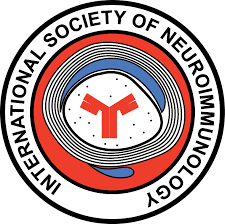Experts at the Congress of the European Neurological Society in Barcelona emphasised that neurological diseases not only cause considerable suffering and undermine people’s quality of life but also incur huge costs. A total of about 220 million people in Europe are affected. The growing significance of this group of diseases is not yet receiving sufficient public attention yet the EU is taking it increasingly into account.
Barcelona, June 2013 – Neuropsychiatric disorders put a financial burden of EUR 798 billion on European economies according to a current study. “Neurological diseases affect a total of 220 million people so they play a big part, something a fact that is often underestimated,” said ENS President Prof Claudio L. Bassetti (Bern University Hospital) at the 23rd Meeting of the European Neurological Society (ENS) in Barcelona. More than 3,000 experts are discussing current developments in their field at this congress right now.
Europe – defined in the study as the 27 EU member states plus Switzerland, Norway and Iceland – reports costs of EUR 64.1 billion incurred by strokes and EUR 35.4 billion incurred by sleep disorders according to the latest figures released by the European Brain Council and the CDBE2010 Study Group. Dementia ranks first on the list of the most expensive diseases, as expected. It caused EUR 105.2 billion in costs in Europe in 2010. Headaches are also expensive (EUR 43.5 billion) as are head injuries (EUR 33 billion). But substantial burdens on the health care systems likewise arise from comparatively rare diseases such as multiple sclerosis (EUR 14.6 billion), Parkinson’s disease (EUR 13.9 billion) and neuromuscular disorders (EUR 7.7 billion). The costs per patient and year vary greatly, ranging from EUR 285 for headaches to as much as EUR 30,000 for neuromuscular disorders.
Direct health costs account for only 37% of the total costs of EUR 798 billion. The rest consists of direct non-medical costs (23%) and indirect costs (40%) traceable for example to sick leave and early retirement. These figures were calculated from the one-year prevalence of the diseases and the estimated expenses per case and year. More than 100 experts took part in the project.
The study covered data on a total of 19 diseases. Prof Bassetti: “It is important to keep in mind, however, that there are hundreds of diseases of the brain and nervous system. Many of them result in extensive disablement and in substantial costs. Since each of these diseases is relatively rare taken singly, we do not have sufficient data to include them in studies on health economics. However, we can assume that all the rarer brain diseases together make a further major impact on the health care system.”
Great attention to brain disorders
The figures are in line with the forecasts of the World Health Organisation, which assumes that neuropsychiatric diseases account for about one third of disease-related costs. Prof Bassetti: “We now know that in earlier publications, we greatly underestimated the costs associated with these diseases.”
The ENS President emphasised that neurological diseases still attract less public attention than oncological or cardiovascular diseases despite these dimensions. He added: “On a positive note, our educational work has borne fruit and the EU is attaching more importance to this issue. By way of example, May 2013 was named European Month of the Brain and 2014 was declared European Year of the Brain.”
Source: Olesen J et al.: The economic cost of brain disorders in Europe. European Journal of Neurology 2012, 19: 155-162
ENS Press Office:
B&K – Bettschart&Kofler Kommunikationsberatung
Dr Birgit Kofler











